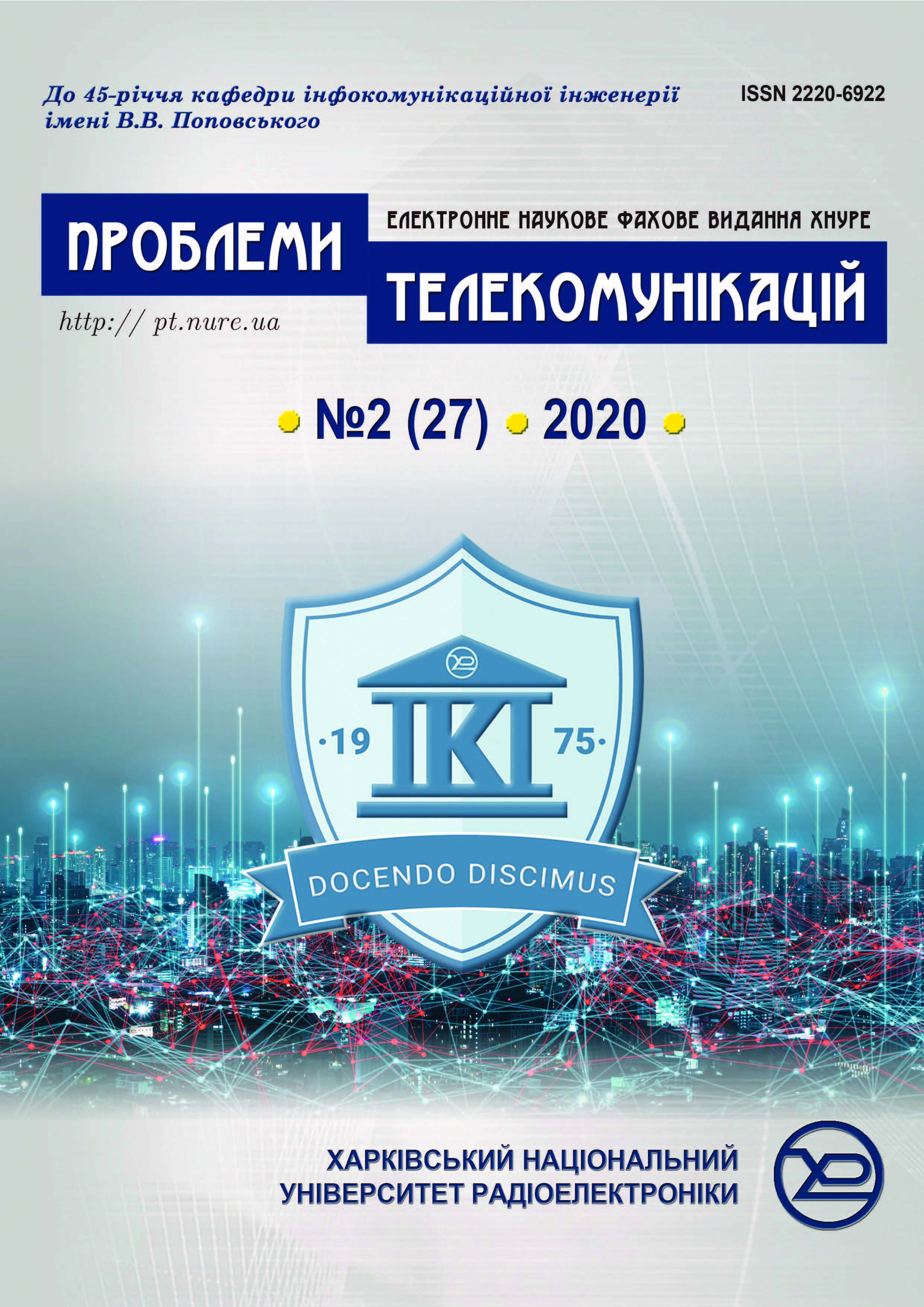Methods of monitoring and control of parameters of signals and elements of the mobile communication network when solving the problem of electromagnetic compatibility
DOI:
https://doi.org/10.30837/pt.2020.2.01Abstract
To ensure the electromagnetic compatibility of mobile networks, it is necessary to monitor and control: radio frequency resource, frequency and power of signals in the allocated frequency resource, group delay time, resistance parameters to linear attenuation and attenuation associated with multi-beam signal transmission, polarization signal parameters, location (coordinates) of moving sources. The evaluation of parameters based on the results of measurements is currently carried out based on observations, and decision-making is carried out based on sample statistics. The use of methods for measuring the parameters of network elements and communication signals against the background of thermal noise is proposed. The measurement methods are based on the recursive Robbins-Monroe algorithm for estimating such parameters as random variables and the recursive Kalman-Bussey algorithm for estimating random processes. The efficiency analysis of recursive algorithms of optimal estimation of random variables and random processes is carried out. The advantage of recursive estimation methods is that, in practice, they are more effective than statistical processing methods, as they provide real-time estimation and do not require a waste of time for accumulation and processing. In addition to noise, extraneous signals are concentrated in the spectrum with the measured signal in radio communication channels. This fact determines the problem relevance of extracting from the additive mixture of signals and interference of useful signals that come from measurements. Methods for measuring the parameters of network elements and communication signals in the conditions of external signals have been developed. The possibility of using in the meters of parameters of mobile communication networks adaptive noise compensators with adaptive reference reception channel is considered, reducing the power of extraneous signals by 20 … 30 decibels and more.
Downloads
Published
Issue
Section
License
Copyright (c) 2021 Koliadenko Yulia, Chursanov Mykyta, Koliadenko Oleksii

This work is licensed under a Creative Commons Attribution-NonCommercial-ShareAlike 4.0 International License.
Authors who publish with this journal agree to the following terms:- Authors retain copyright and grant the journal right of first publication with the work simultaneously licensed under a Creative Commons Attribution License that allows others to share the work with an acknowledgment of the work's authorship and initial publication in this journal.
- Authors are able to enter into separate, additional contractual arrangements for the non-exclusive distribution of the journal's published version of the work (e.g., post it to an institutional repository or publish it in a book), with an acknowledgment of its initial publication in this journal.
- Authors are permitted and encouraged to post their work online (e.g., in institutional repositories or on their website) prior to and during the submission process, as it can lead to productive exchanges, as well as earlier and greater citation of published work (See The Effect of Open Access).

